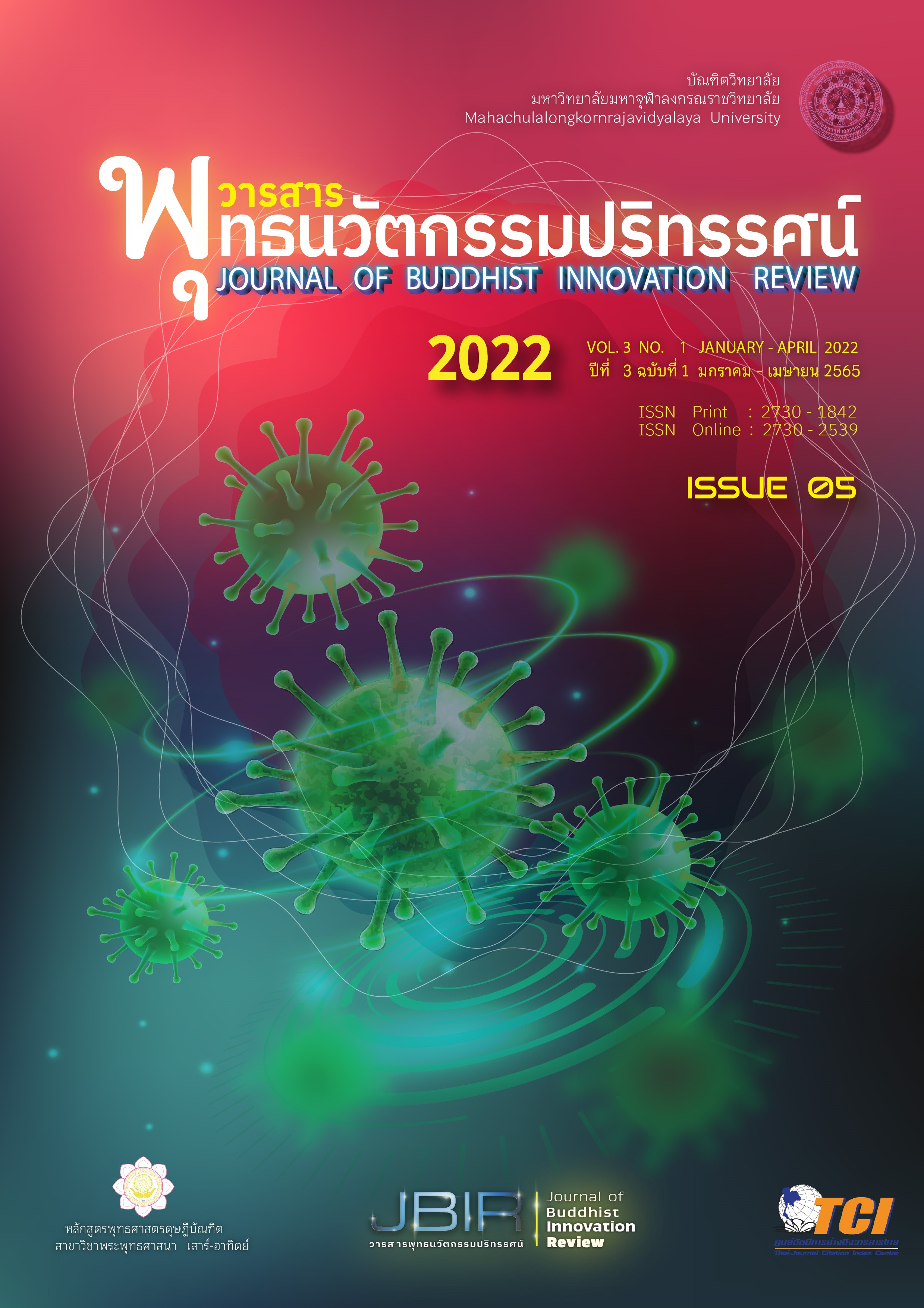Dhamma Dissemination for the New Generation in the New Normal Era
Main Article Content
Abstract
Dhamma Dissemination for the New Generation in the New Normal Era has adjusted the learning process from Passive Learning to Active Learning through Five Teaching Models, depending on the context, readiness and suitability of the institution or various organizations, namely: 1) Online 2) On-Demand 3) On-Air 4) On-Hand 5) On-Site. Online learning is a 2-way communication through social media or digital platforms by broadcasting via the Internet, which is the most commonly used in the New Normal era. Using contemporary model and easy-to-understand format, content, language, also a study of behaviors, attitudes and values of the new generation help lecturers understand and reach the new generation easily, conveniently, quickly and safely; furthermore, save time and money. Giving love and compassion to build faith and wisdom in Buddhism, we have to make new generations aware and bring the Dhamma of the Buddha to behave and to conduct it for their own benefits and happiness of themselves and others in society, so that the Buddha's Dhamma can still be continued and inherited.
Article Details

This work is licensed under a Creative Commons Attribution-NonCommercial-NoDerivatives 4.0 International License.
เรื่องลิขสิทธิ์/เป็นความคิดเห็นของผู้เขียน
References
เอกสารอ้างอิง
หนังสือ
พระพรหมคุณาภรณ์ (ป. อ. ปยุตฺโต). (2556). พุทธวิธีในการสอน. พิมพ์ครั้งที่ 18. กรุงเทพมหานคร: บริษัท พิมพ์สวย จำกัด.
มหาจุฬาลงกรณ์ราชวิทยาลัย. (2539). พระไตรปิฎกภาษาไทย ฉบับมหาจุฬาลงกรณ์ราชวิทยาลัย. กรุงเทพมหานคร: โรงพิมพ์มหาจุฬาลงกรณ์ราชวิทยาลัย.
สื่ออิเล็กทรอนิกส์
กรมควบคุมโรค กระทรวงสาธารณสุข.(2563).โรคติดเชื้อไวรัสโคโรนา2019(COVID-19).[ออนไลน์].แหล่งที่มา: https://ddc.moph.go.th/viralpneumonia/. (วันที่สืบค้น 9 กันยายน 2564)
สำนักงานกรรมการศึกษาขั้นพื้นฐาน. (29 มกราคม 2564). สพฐ. แจงเลือกวิธีเรียนได้หลายแบบ หากไม่พร้อมเรียนออนไลน์. [ออนไลน์]. แหล่งที่มา: https://www.obec.go.th/archives/377135. (วันที่สืบค้น 9 กันยายน 2564)
สำนักงานพัฒนาธุรกรรมทางอิเล็กทรอนิกส์. (9 เมษายน 2564). รายงานผลการสำรวจพฤติกรรมผู้ใช้อินเทอร์เน็ตในประเทศไทย ปี 2563. [ออนไลน์]. แหล่งที่มา: https://www.etda.or.th/th/newsevents/pr-news/ETDA-released-IUB-2020.aspx. (วันที่สืบค้น 9 กันยายน 2564)
เสมอ นิ่มเงิน. (2562). Generation กับพฤติกรรมการรับข่าวสารผ่านสื่อต่างๆ. กรมประชาสัมพันธ์[ออนไลน์].แหล่งที่มา: https://www.prd.go.th/th/page/item/index/id/1. (วันที่สืบค้น 9 กันยายน 2564)
สถาพร พฤฑฒิกุล.(4 กุมภาพันธ์ พ.ศ. 2559).การจัดการเรียนการสอนแบบ Active Learning [ออนไลน์].แหล่งที่มา: https://km.buu.ac.th/article/frontend/article_detail/141.(วันที่สืบค้น 9 กันยายน 2564)
Marketingoops.com. (20 พฤษภาคม 2556). เจเนอเรชั่น และความต่าง “Gen-X Gen-Y Gen-C. [ออนไลน์]. แหล่งที่มา: https://www.marketingoops.com/reports/behaviors/gen-x-gen-y-gen-c/. (วันที่สืบค้น 9 กันยายน 2564)
Marketingoops.com. (17 ธันวาคม 2561). เจาะเทรนด์ ‘เด็ก Gen Alpha’ เพียงพ่อแม่สนับสนุนก็ประสบความสำเร็จในอนาคตได้. (17 ธันวาคม 2561). [ออนไลน์]. แหล่งที่มา: https://www.marketingoops.com/reports/gen-alpha-s26. (วันที่สืบค้น 9 กันยายน 2564)

